Return of the Ancient Rattanakosin Island in Bangkok City 2100
Cautionary Tale of a new Water Parliament in Bangkok city that embraces sea level rise and values it as an opportunity, using 3 integrated water infrastructure as an urban redevelopment toolkit that brings back Traditional Thai Water Culture.
“Bangkok has long been known as the “Venice of the East” for its extensive network of canals. Building on soft clay and over-extraction of groundwater, according to some estimates, parts of Bangkok are sinking by two centimetres annually, and if nothing has been done, the whole city will be submerged by water completely in 2100. Water which used to be a sacred element that brings lives and civilization is now threatening the survival of Thai people as well as the unifying spirit of the country.”
The thesis is built around a fictional realm of the inhabitable landscape of Bangkok city in the year 2100 where a new Water Parliament is situated at the ancient Rattanakosin Island that pertained to the commons of water and subjected to the groups of people living in the island that represents the culture and people of the Thai city. It celebrates a different aspect of water and engages the traditional Thai water culture with more advanced technology and infrastructures.
It also explores the potential of using water to allow the Thai people to adapt their life to this ground changes as the sea water rises. Using a new water culture to demonstrate that the environmental crisis of sea-level rise is potentially a new opportunity for them to reshape the city and the power of this organic growth is given back to the resident through their participation in the redevelopment of the city.
As the water is slowly rising and affecting the daily life of the locals, the speculation scenario is set in context where most of the low-rise buildings along the Chao Phraya river edges are submerged by water. Overall, the Water Parliament works on 3 architectural strategies that allow the return of the ancient Rattanakosin Island in 2100, and the 3 alternative water infrastructure are the Spiritual Embankment, the Inhabitable Scaffold, and the Mangrove Lagoon.
Spiritual Embankment is a ring of defence that is around the ancient and historic monuments to keep them as they are when the sea level rises. It enhances the sacredness of these temples with aqua healing functions that allows the visitors to be spiritually enlightened. There will be a series of purification ponds, bathhouse and communal dining, food hall, massage parlor, and market with boat docking platform facilities that help to collect and store rainwater.
Inhabitable Scaffold is a series of scaffold structures that are activated as inhabitable space when the flood goes up. It facilitates a new business opportunity for the local Thai where the existing infrastructures near the monuments are adapted with new aquatic functions. The 3 stages of infrastructure growth will be carried out over the year to facilitate the future living with water where the rainwater will be harvested using the water funnel roof as the resource.
Mangrove Lagoon is a line of coastal defenses that sits at the edge of the old river system of Rattanakosin Island. It uses mangroves to activate an aquaculture living and new form of ecotourism on the island of Bangkok city. This reconnection with water also allows some of the locally-owned Mangrove Floating Apartment to be used as an eco-chalet for tourists or a floating market for locals to sell their stuff there.
The 3 design booklets are designed with water infrastructure guidelines that will be given out to the locals and educate them on the various benefits of water and how it can become a space-making material. Each of these manuals also summarize what environmental challenges that the locals will be facing by living at the different locations across the whole island and how they are going to adapt their life through the participation of building infrastructure that can safeguard their own property and cultural identity.
What if the Thai people decided to embrace rising sea levels and turn water into a celebration element that continues serving them?
In conclusion, the artworks are part of the visual representations that suggest a distant reminiscence of the Thai Mural Painting. The various narrative scenes in these artworks are scattered around a larger environment which tends to communicate a more global idea on the characteristics of this new Thai city in 2100. Even though the three inhabitable infrastructures are being designed individually, they all existed as one, and the presence of water in this new wet city that the Thai people are celebrating binds the whole island together and establishes the water parliament.
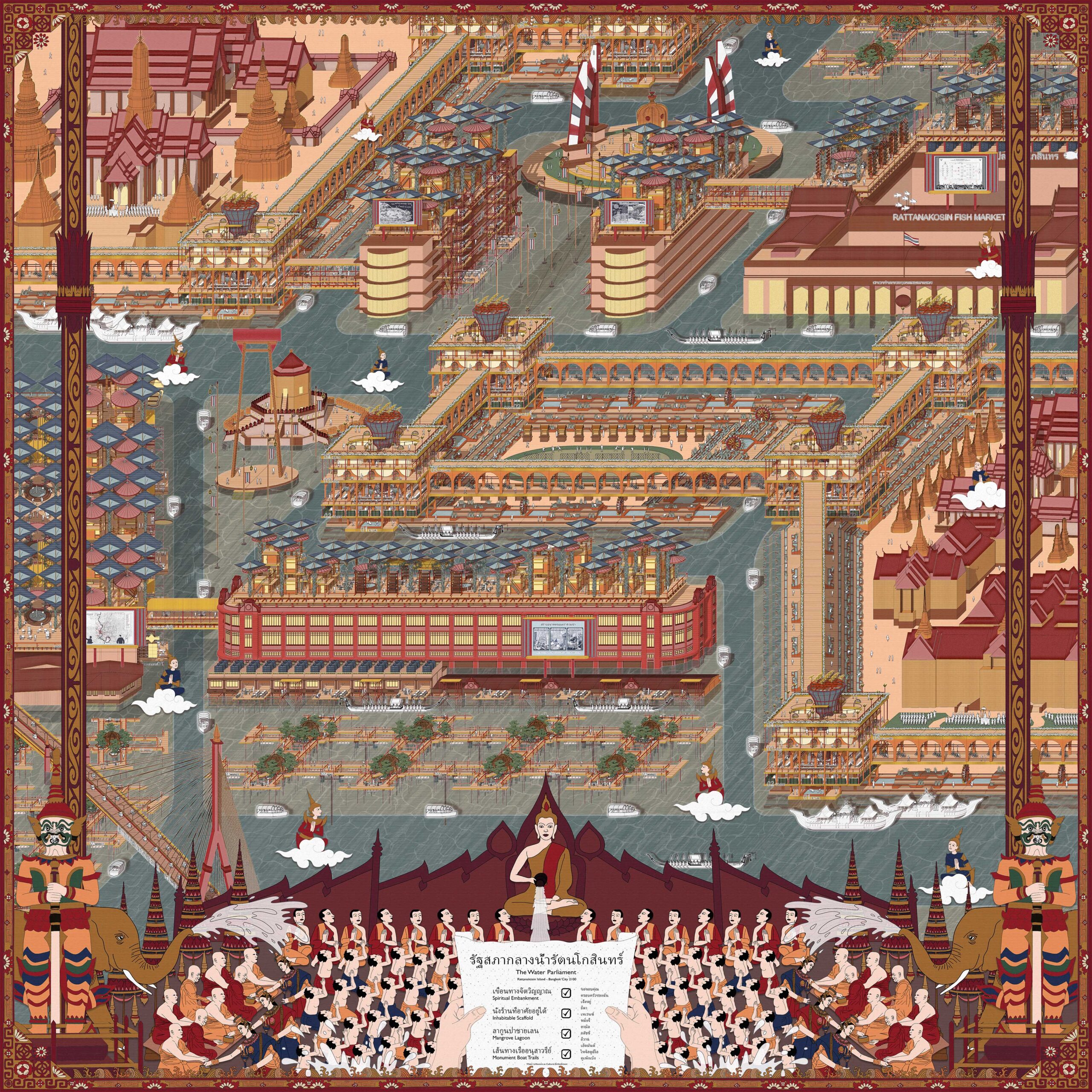
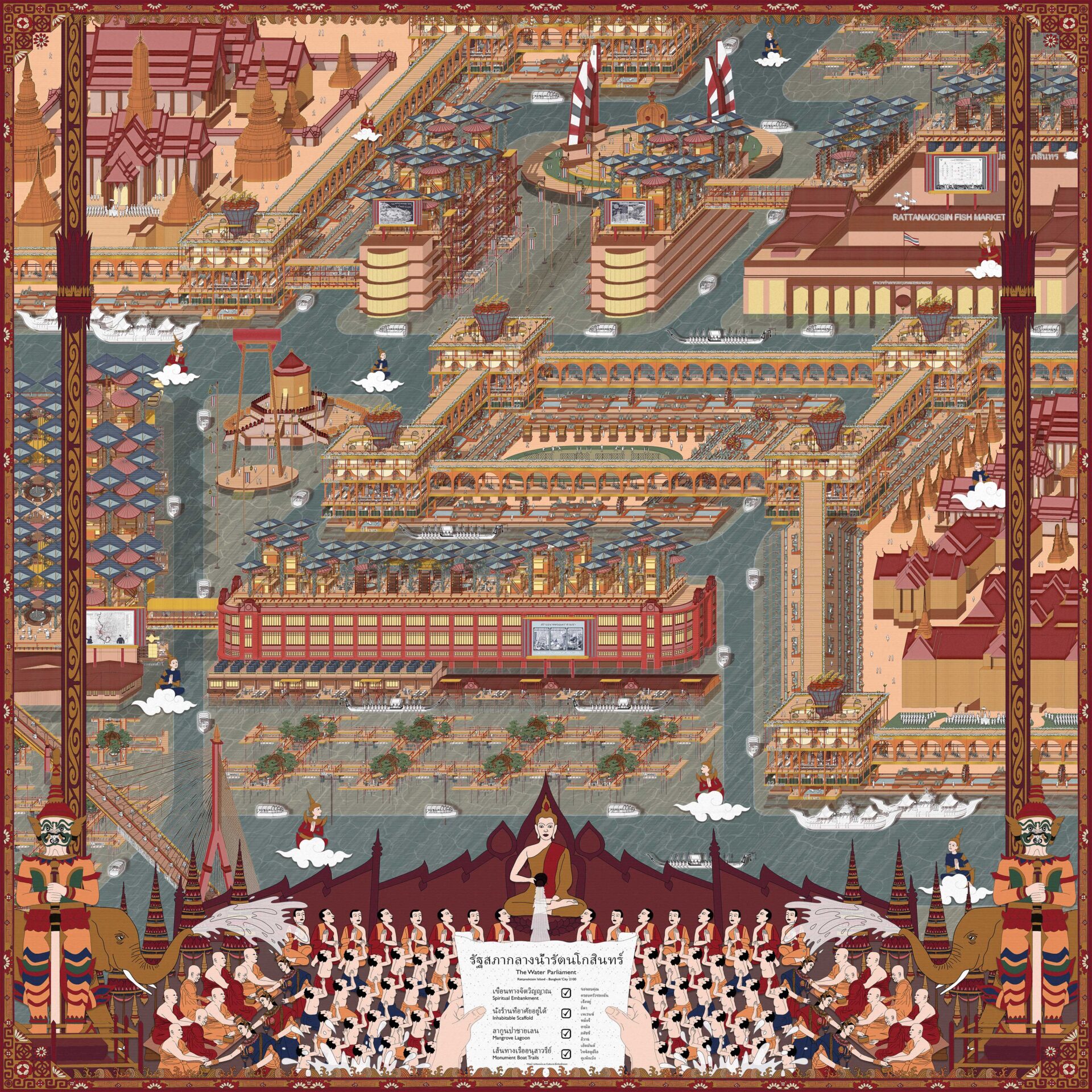
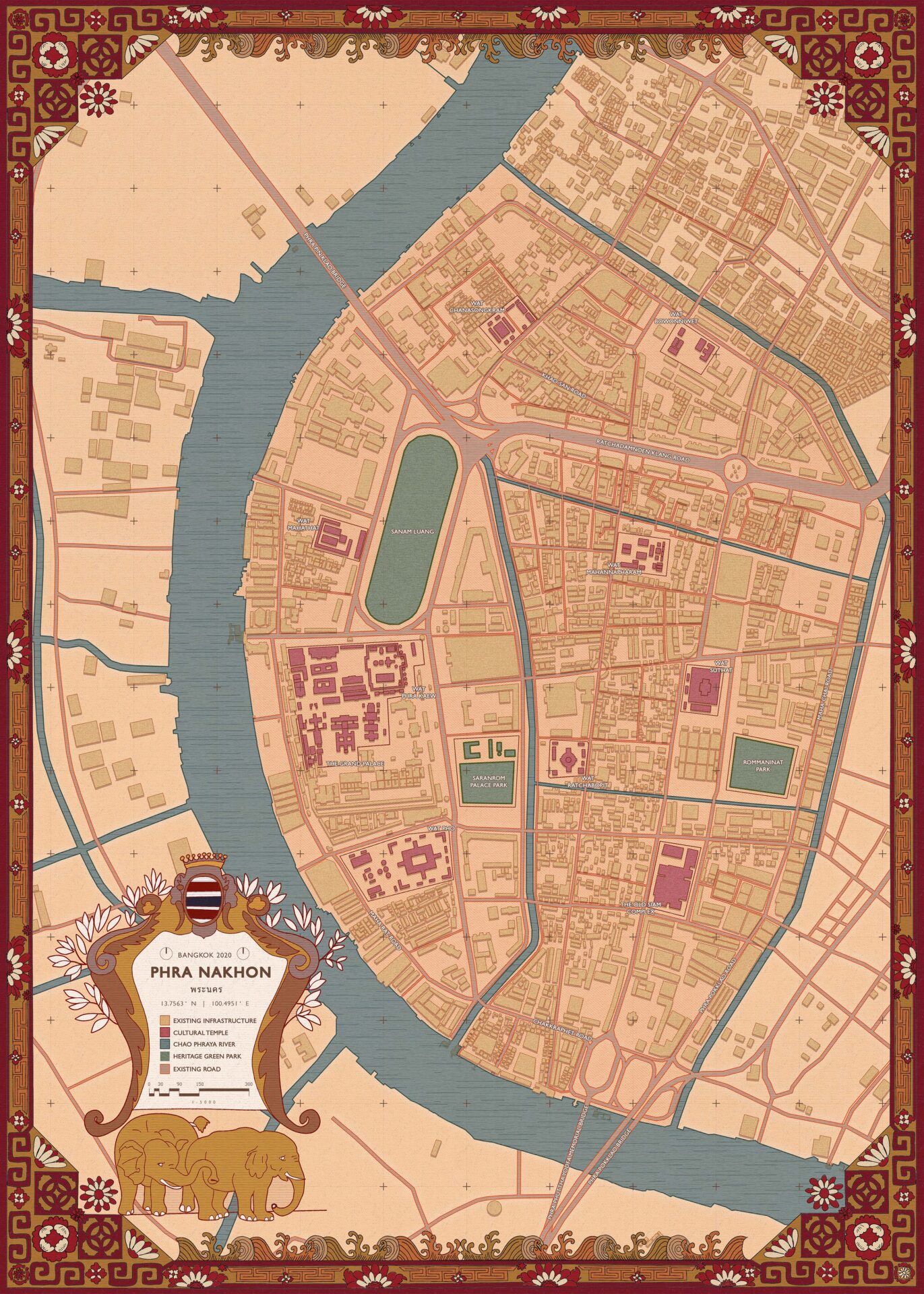
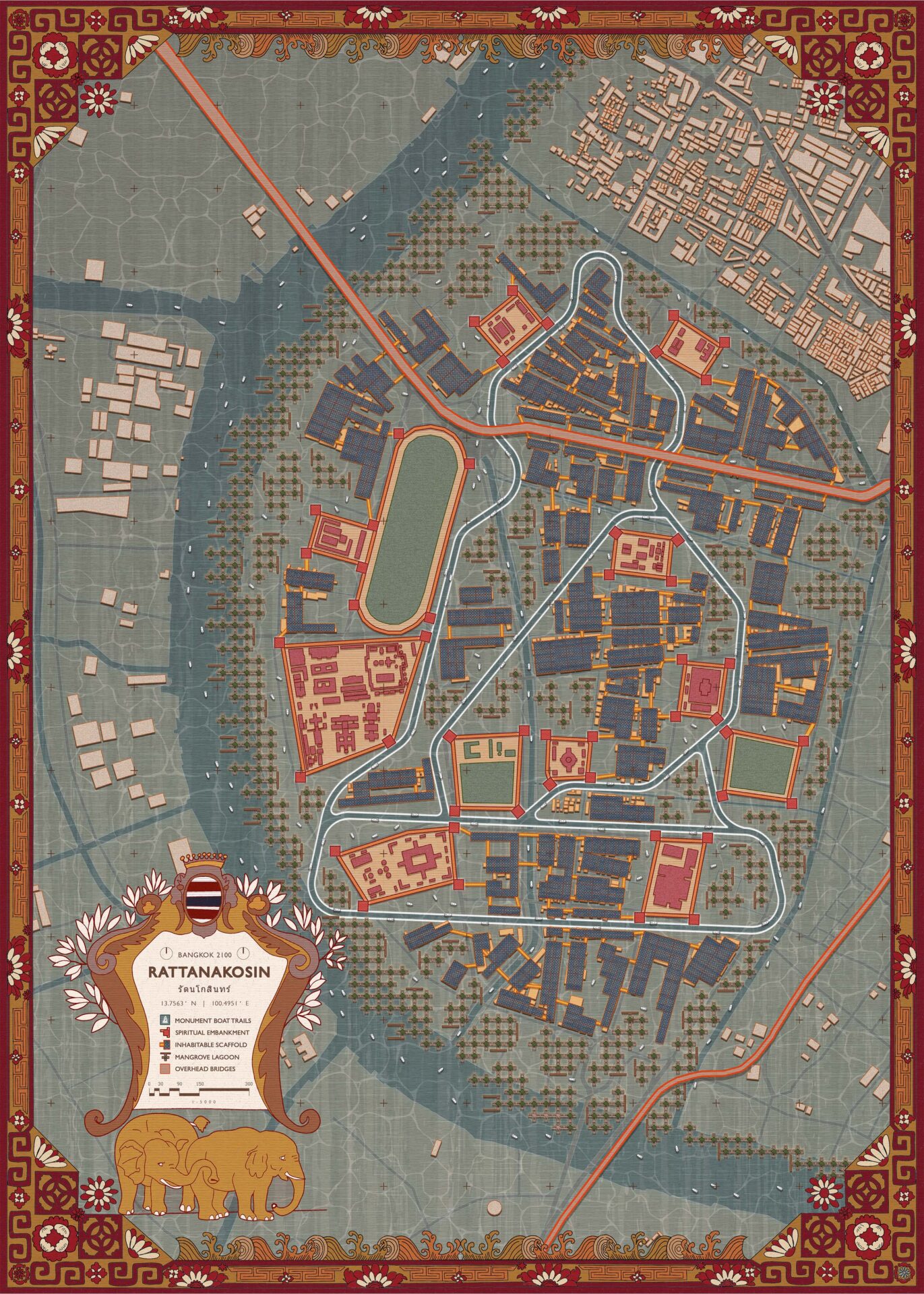
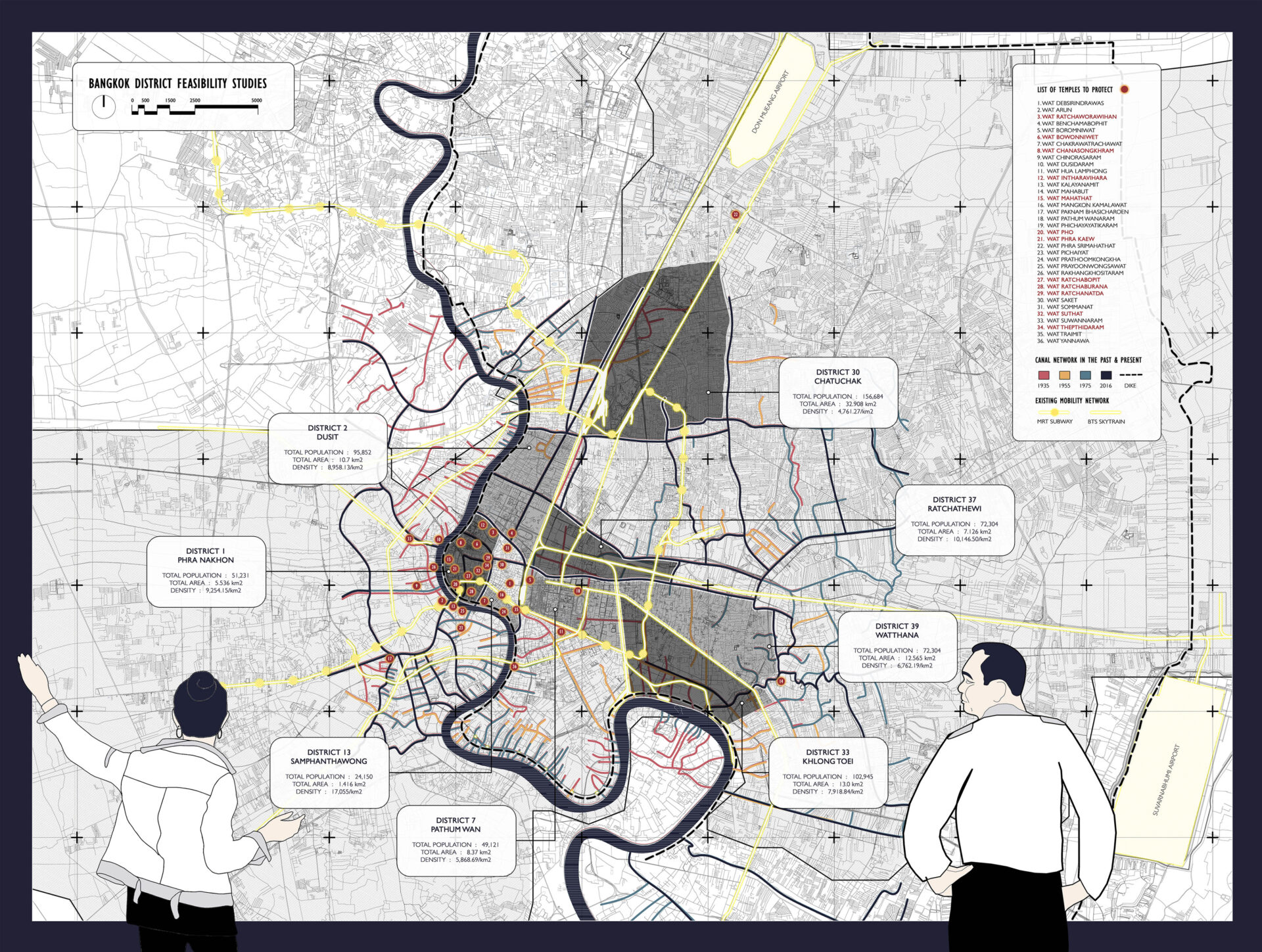
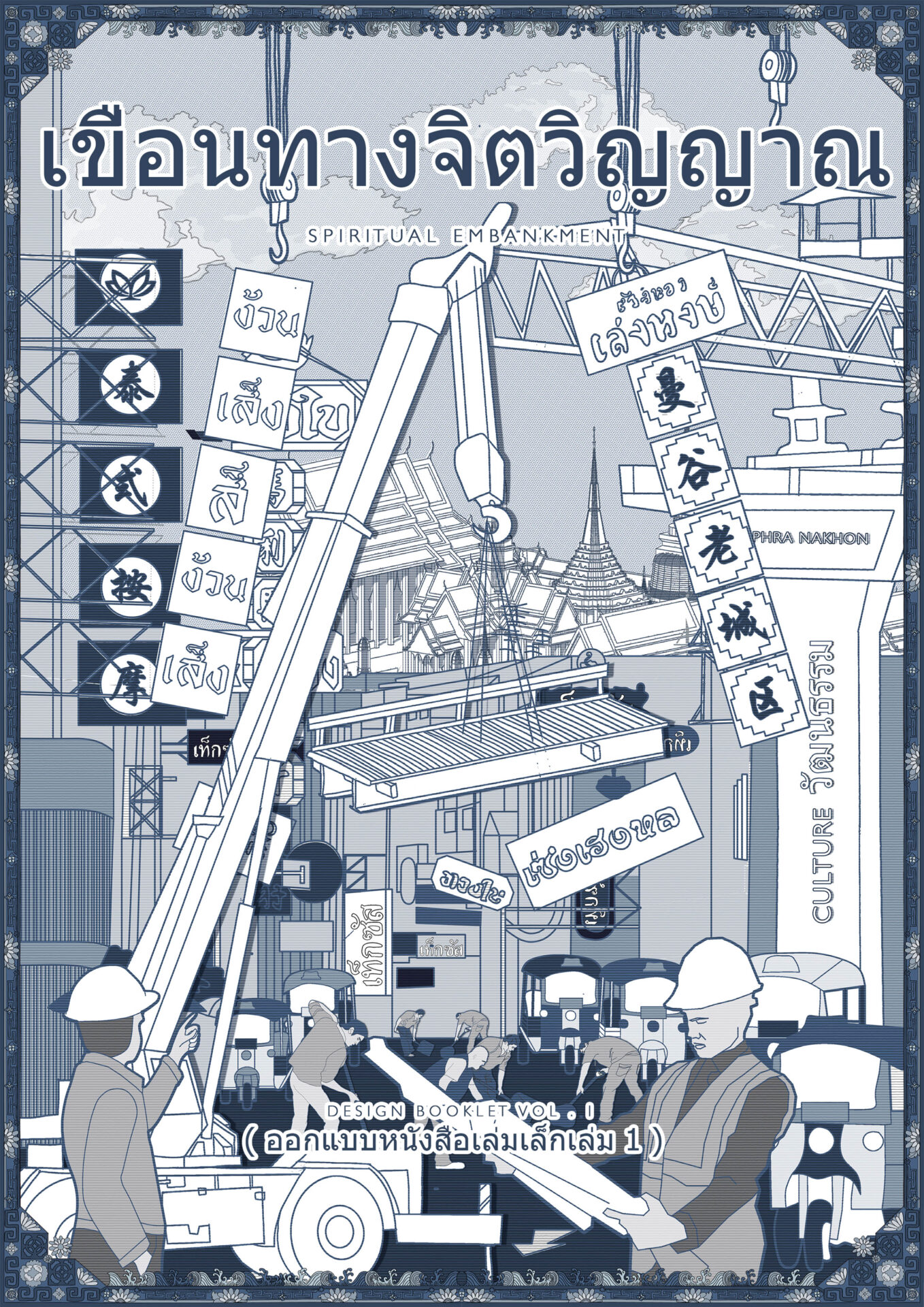
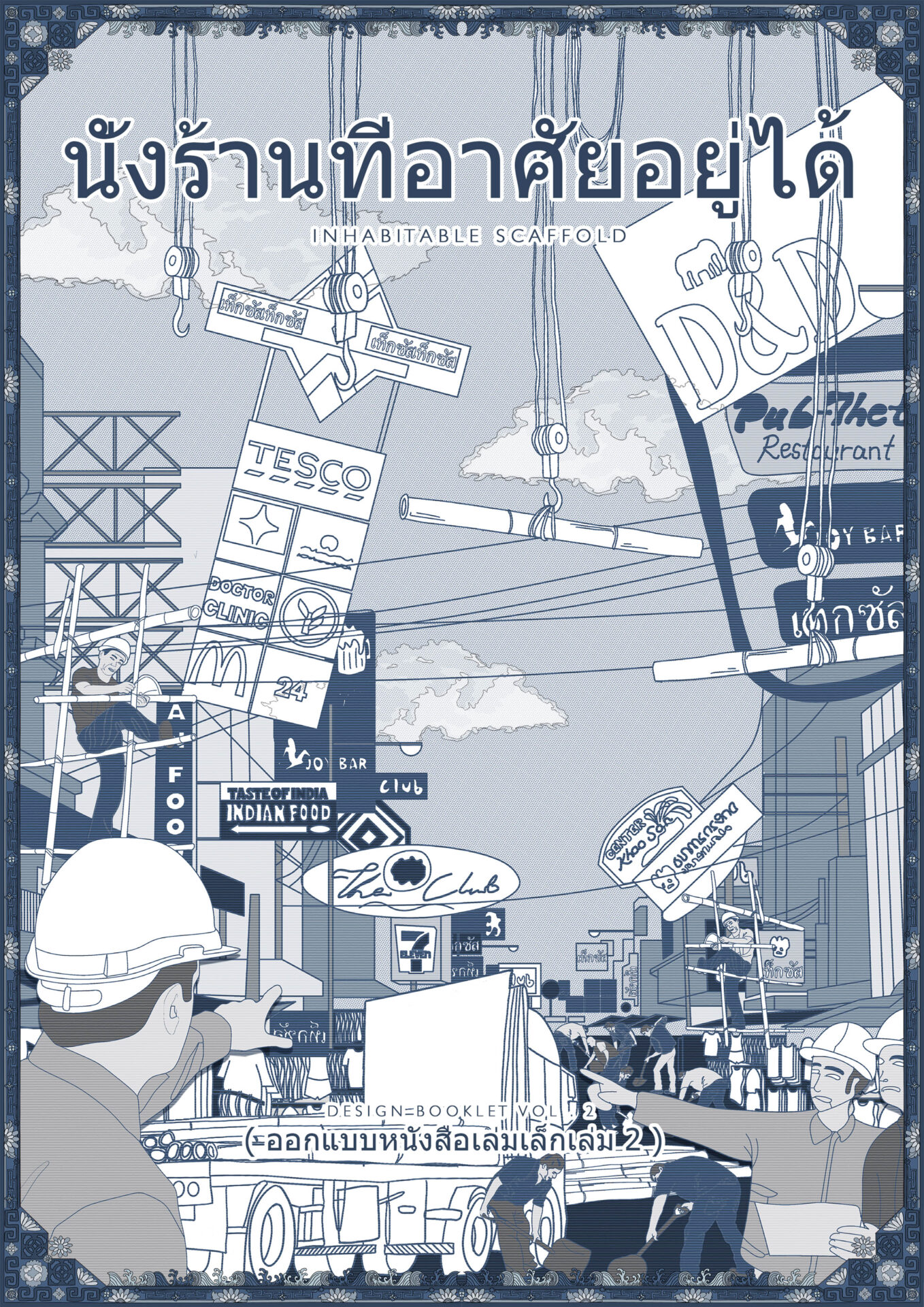
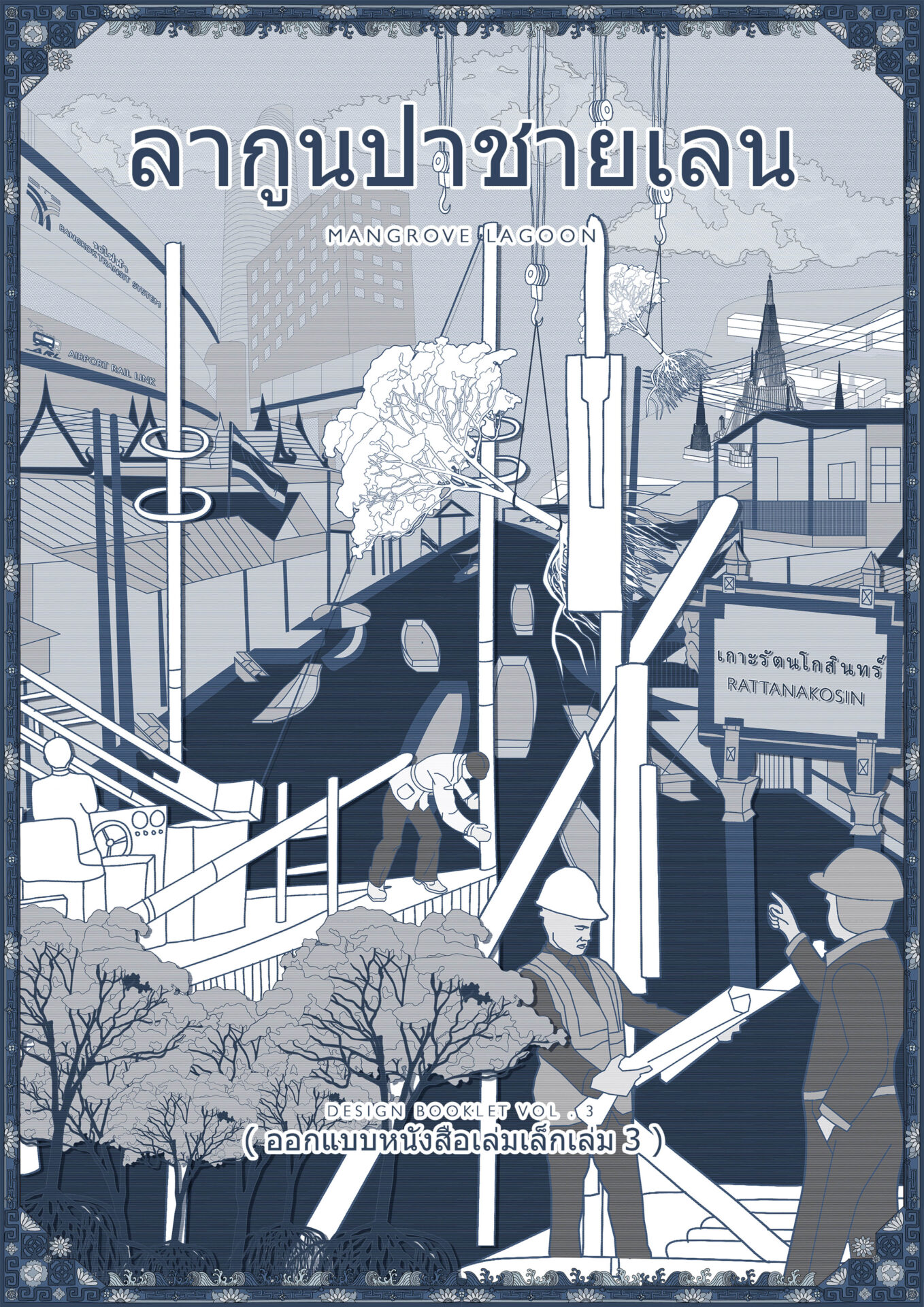
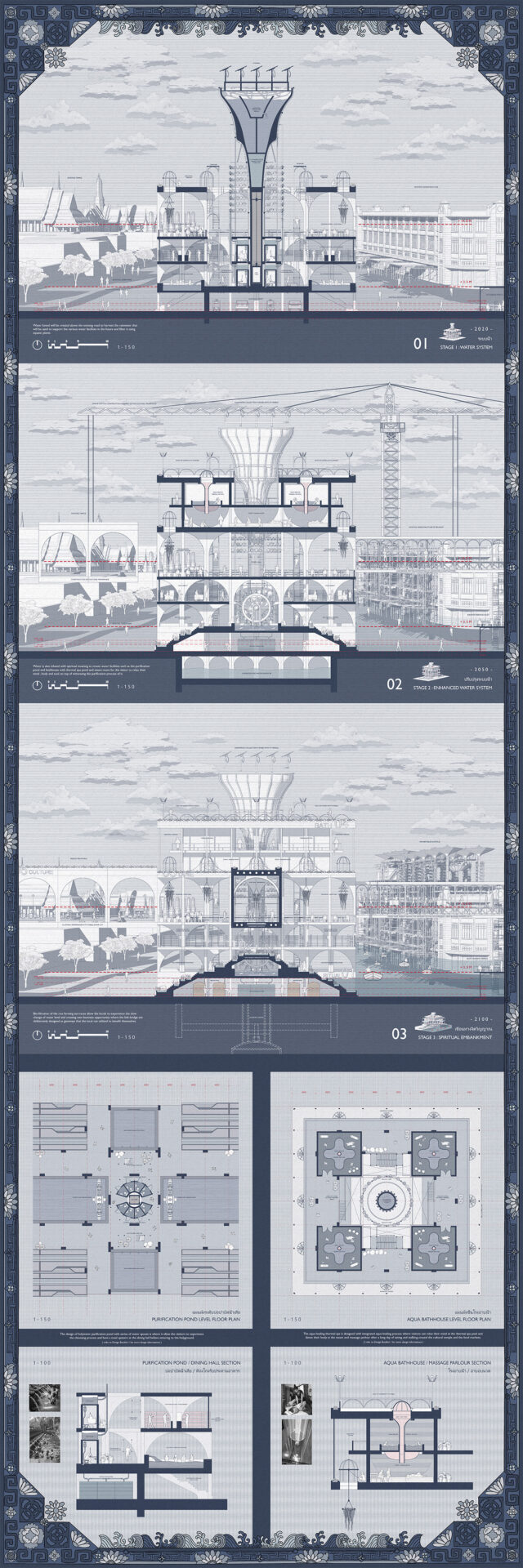
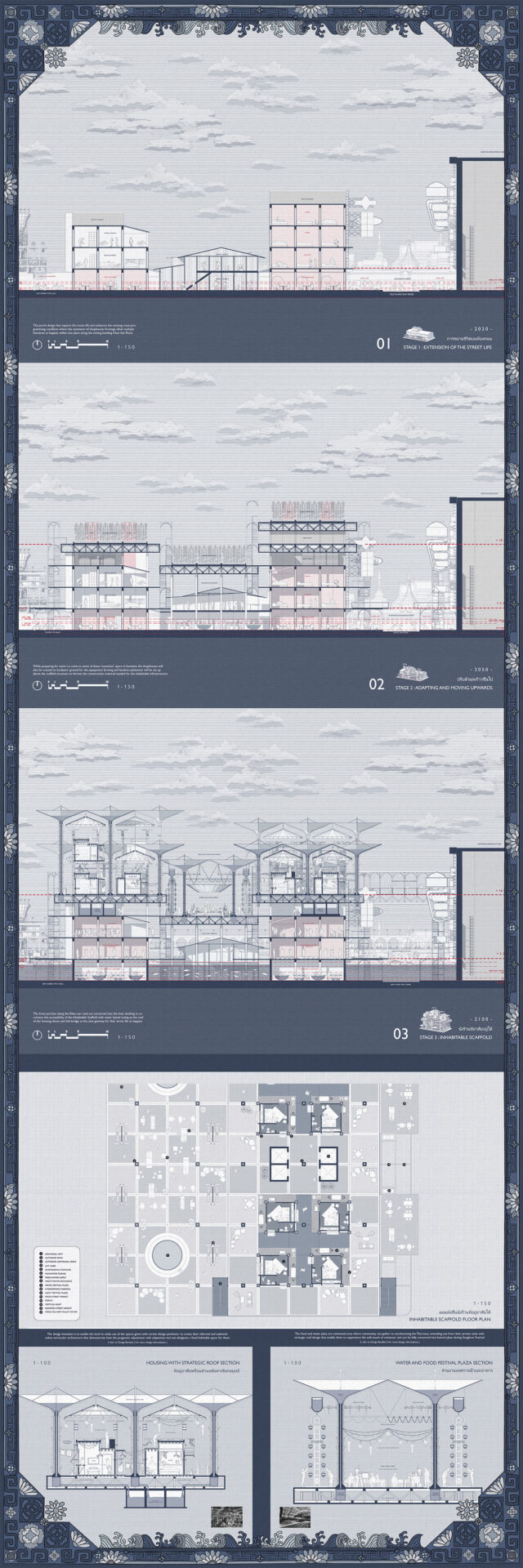
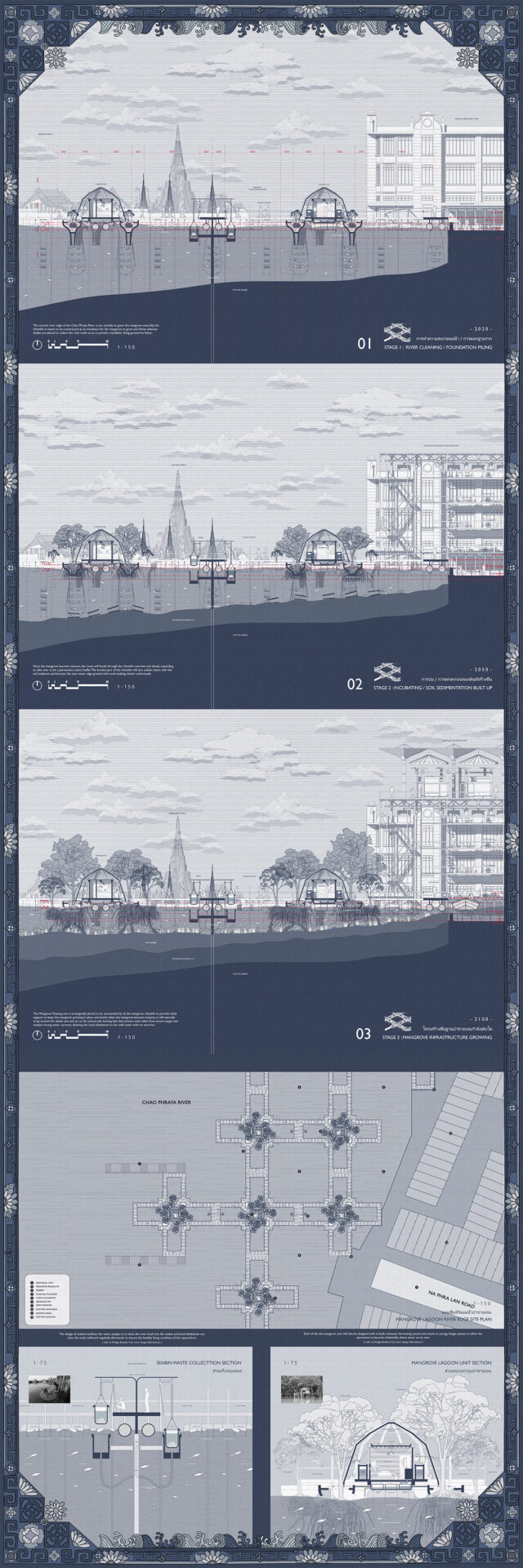
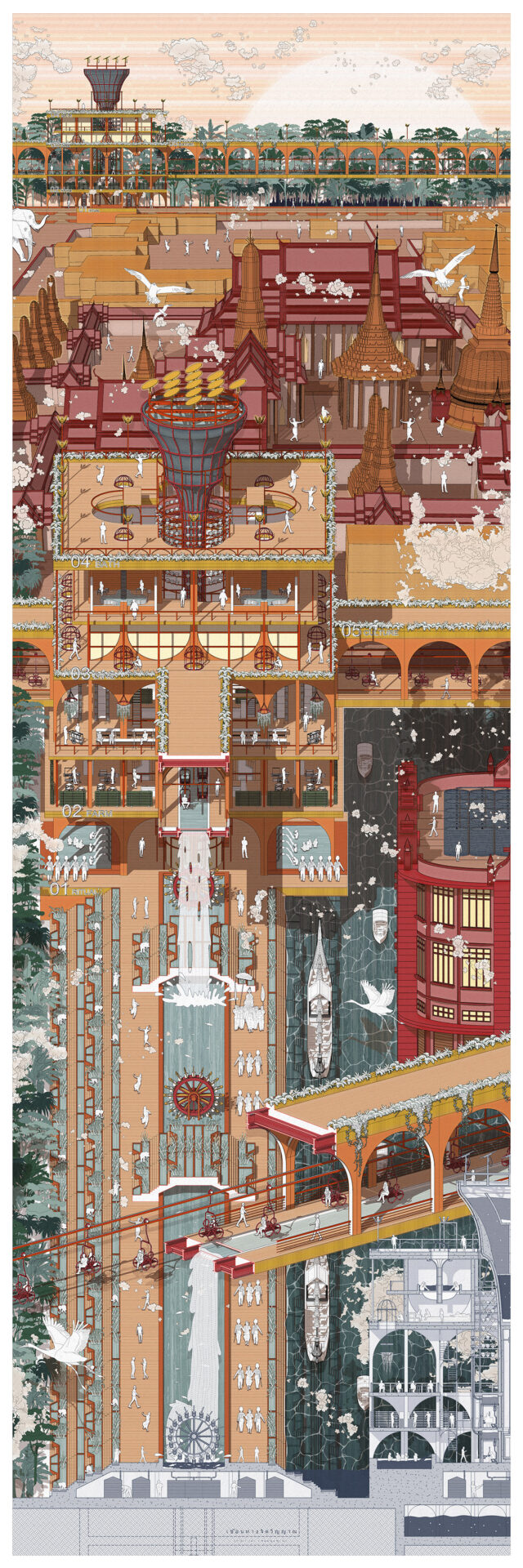
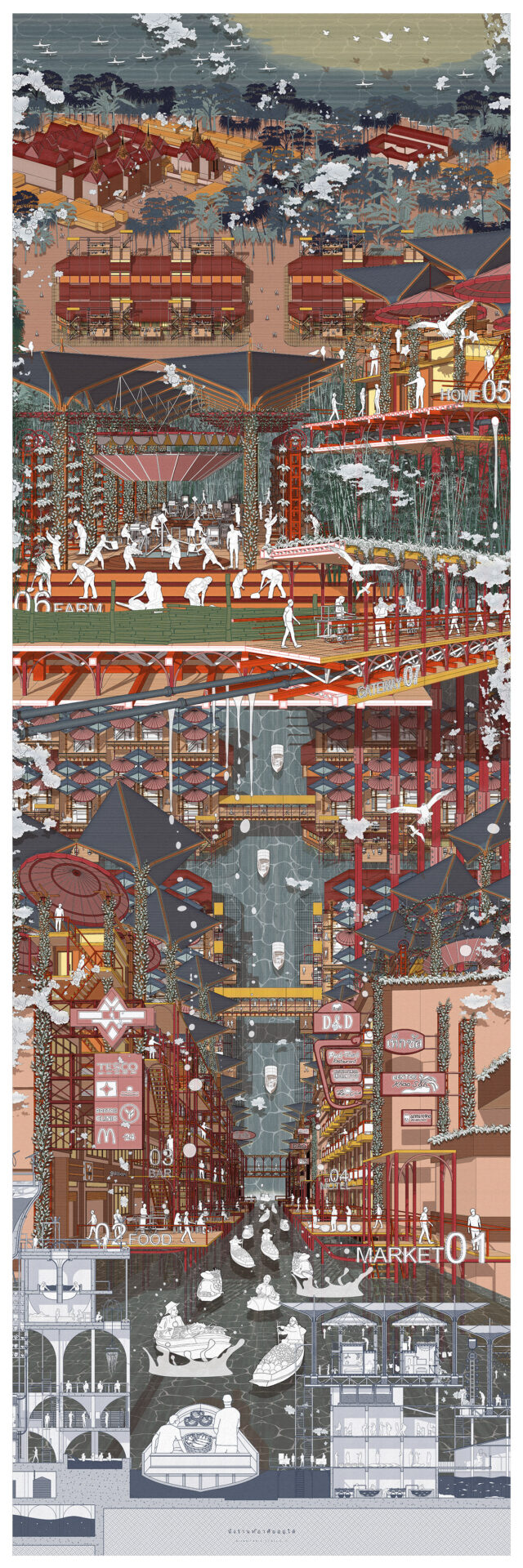
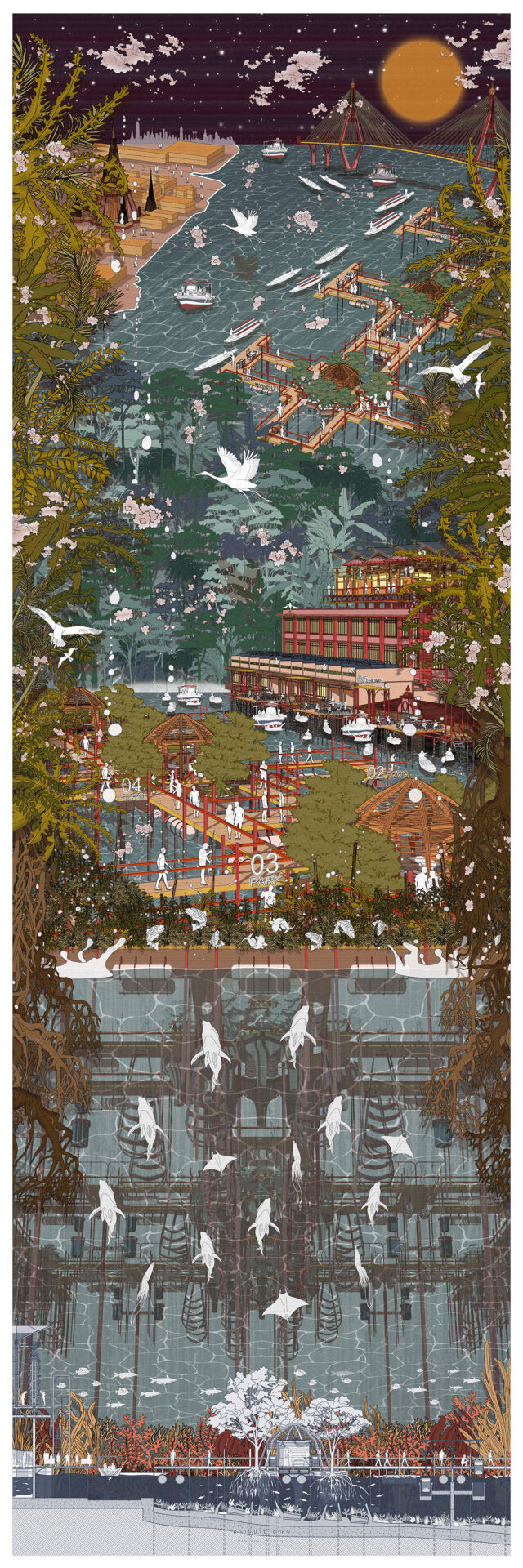
Supervisor's comments:
Tyler’s project asks the question: “What if coastal cities embraced the rising sea level and allowed it to transform its urbanism?”. Beautifully drawn, Tyler’s project imagines Bangkok being transformed over time with three systems that addresses different conditions. Embankments around sacred monuments and temples form an archipelagos of sacred islands surrounded by intricate scaffold structures constructed over existing shophouses. New structures along the water edges form the foundation for inhabited mangrove forests that will be productive as well as protective. Tyler’s project, through its imaginative power draws us into another possibility for Bangkok and through it a hopeful vision in the anthropocene.
- Adj. Assoc. Prof. Khoo Peng Beng